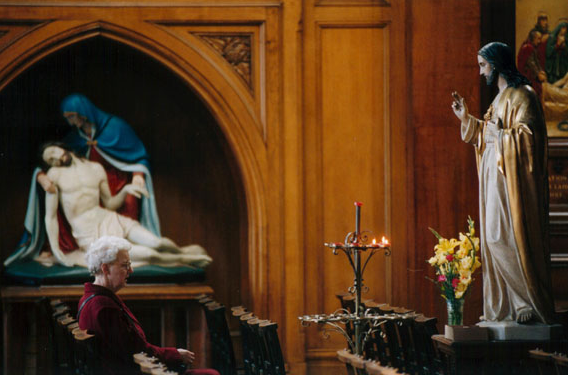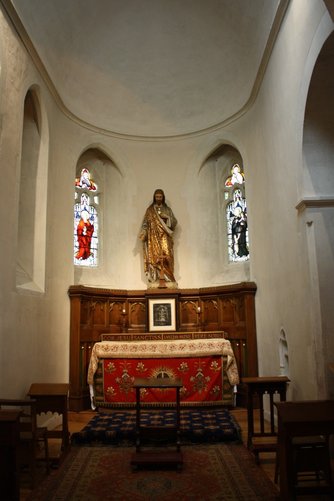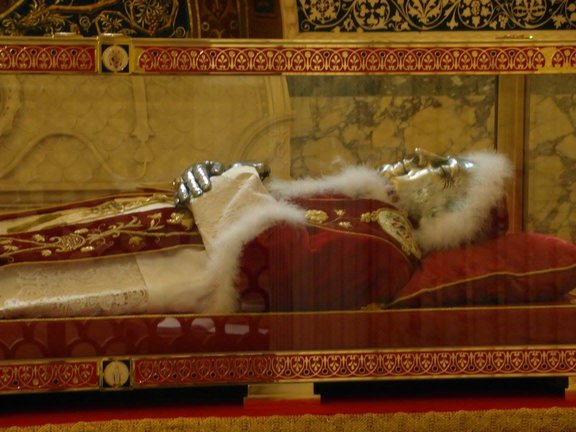
Interesting Churches: Here, There and Everywhere
1.57k
 As someone not particularly interested in architecture, I’m not sure I’ve ever encountered a church that I would describe as “interesting”. This is surely a problem when it comes to contributing to a blog series on interesting churches! Of course the word ‘interesting’ can be taken in many ways and perhaps I should talk about a church with a significant history – say the Lateran Basilica in Rome, or the now destroyed cathedral of St Andrew’s in Scotland. Or perhaps we can take ‘interesting’ to mean ‘architecturally significant’, such as San Clemente in Rome, where the twelfth century basilica sits on top of a fourth century church which is itself founded on second and first century houses and pagan temples.
As someone not particularly interested in architecture, I’m not sure I’ve ever encountered a church that I would describe as “interesting”. This is surely a problem when it comes to contributing to a blog series on interesting churches! Of course the word ‘interesting’ can be taken in many ways and perhaps I should talk about a church with a significant history – say the Lateran Basilica in Rome, or the now destroyed cathedral of St Andrew’s in Scotland. Or perhaps we can take ‘interesting’ to mean ‘architecturally significant’, such as San Clemente in Rome, where the twelfth century basilica sits on top of a fourth century church which is itself founded on second and first century houses and pagan temples.Admittedly one might not find accounts of such a kind interesting at all; the word interesting it seems to me implies a personal commitment or investment in a thing. To this end I’m not particularly sure that I find any church interesting. When I first visited St Peter’s in Rome I remember thinking it a little smaller than I’d expected and, perhaps because of this, I was distinctly unaffected by it. I’d presumed that seeing the Vatican would be a big deal, that I’d have some sort of emotional reaction to just setting foot in what remains of the territory of the Holy See. But alas, I don’t think I’ve really ever had quite that experience from seeing a building.
This isn’t to say I don’t like visiting churches or spending time in them and indeed I can think of a few favourite ‘church-spots’.


In Edinburgh at the Cathedral of St Mary’s there is, to my mind, a deeply attractive atmosphere. I don’t call it an atmosphere of prayer because I’m not entirely sure what such an atmosphere looks like, but I particularly like to sit in that church towards the back in front of the golden cloaked statue of the Sacred Heart of Jesus. The statue sits, a bit awkwardly, at the end of some pews in front of a pillar. There is a similar spot in the Dominican priory church in London, a fine statue of Jesus bearing his Most Sacred Heart, standing just behind the altar rails on the right hand side of the sanctuary. Of course, anyone who rejoices in finding a tasteful statue of the Sacred Heart and is familiar with Oxford knows the best place to go is the Oratory on Woodstock Road where, in a side chapel which seems to extend a little further back than the sanctuary, there stands a compassionate Christ with one pierced palm gently extended from his side towards us and another pointing at his chest where his heart shines forth.
Discussing the chapel with another devotee today, he mentioned that part of its power is found in its seclusion. There is a real sense, we’ve found, that you’ve receded into a private place with Christ. When you go into the side chapel you’re stepping off the beaten path and gone to a place with only one focus: Jesus and his love for us as displayed in this powerful image.
I have in fact found this experience in another church, that of the Basilica of Saint Lawrence Outside the Walls in Rome. The church itself is very interesting for all sorts of reasons. It’s a composite of different periods of architecture and also has sacred statues standing oddly in places that suggest the saints depicted don’t have too much regard for the architects’ vision. Saint Lawrence himself is laid quite respectfully in the purpose-built shrine at the centre of the church with some companions, but behind him rests another saint. Further back into the crypt in a glass tomb rests Blessed Pius IX, the Successor of Peter whom God deigned to have reign over the universal Church longer than any other. Pio Nono was a giant of his time, simultaneously at war and in love with his age. Indeed, his personal popularity is a curious historical anomaly: for someone so at odds with everything going on around him he, personally, was always much loved. It’s worth noting that when Mazzini and his gang chased the Pope out of Rome and held a plebiscite for a president of the new republic, the people of the city voted overwhelmingly for their Pope.


But whatever popularity Pius had when he was alive it seems to have died with him and, indeed, he’s not all that well thought of anymore. And so there he lies in a little glass box (he was a short giant) with no elaborate altar built around him as the popes in St Peter’s have, nor statues nor a long queue of devotees: indeed, the only thing to tell you who it is you’re looking at is a rather tatty bit of paper stuck in a plastic stand you’d get out of a stationery shop.
Of course he’s well dressed but he nonetheless seems tragically isolated. However, when you accompany him in his solitude you begin to intuit something: you’re not the only one keeping vigil. Jesus withdrew to pray not just to get away from the squabbling of the apostles but to get closer to his Father. It seems to me that in solitude we can begin to feel the presence of God as we might pick up a very faint sound barely registering to our ears; it comes and it goes and we can’t really be sure but, if we strain our ears, or our hearts, we notice it.
In the little sacred spots of Edinburgh, London or Oxford you can go to sit in that presence and in San Lorenzo’s in Rome it seems that Pio Nono, taking a break from all the squabbling of his turbulent age, is resting. It’s as if his body is patiently waiting to encounter the fullness of that presence his soul now enjoys in Heaven. And that seems quite interesting.
Images
[1] The Sacred Heart and Pieta in St Mary’s Metropolitan Cathedral, Edinburgh.
[2] The Sacred Heart Chapel, Oxford.
[3] Pius IX’s tomb, St Lawrence’s Outside the Walls, Rome.
Sorry, the comment form is closed at this time.



A Website Visitor
Unusual, insightful, fascinating! Thank you!